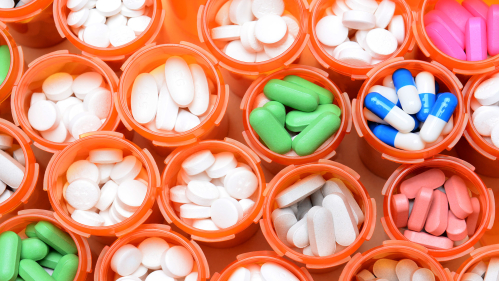How Medicines Are Making the Planet Sick

As Earth Day approaches, the Journal of the American Pharmacists Association has a proposal from Rutgers Health researchers to help reduce a large but little-discussed contributor to climate change: the pharmaceutical industry.
Rutgers Today discussed the problem and some potential solutions with two contributors: lead author Catherine Chen, an assistant professor at Rutgers Robert Wood Johnson Medical School and senior author Mary Bridgeman, a clinical professor at the Rutgers Ernest Mario School of Pharmacy.
How much greenhouse gas does the pharmaceutical industry generate?
Bridgeman: It’s estimated the global pharmaceutical industry accounts for approximately 52 megatons of carbon dioxide equivalents annually – roughly 4.5 percent of total greenhouse gas emissions.
You must consider the entire medication lifecycle: the global supply chain, including acquisition of chemicals from every corner of the globe, the chemical manufacturing, the packaging, the distribution and the eventual disposal. We know that of all the carbon emissions associated with the health care industry, about 18 percent come from making chemicals and turning them into pharmaceuticals.
Is high carbon emission an inescapable aspect of pharmaceutical products?
Chen: Some medications may well require ingredients or manufacturing processes that produce high emissions, but we can reduce the carbon impact of many medications without reducing their efficacy.
For example, most metered dose inhalers for conditions like asthma use propellant systems that produce the equivalent of 20 kilograms of carbon dioxide emissions per inhaler. Newer propulsion systems that use things like dry powder produce emissions equivalent to one to four kilograms of carbon dioxide.
What other aspects of pharmaceutical production account for its high environmental impact?
Chen: The contribution is more than you’d see from other industries making products of similar size and weight. The manufacturing uses single-use, unrecycled plastics, designed and assembled in ways that make them almost impossible to recycle on the other side. That could be improved.
Where else might there be room for improvement?
Bridgeman: There’s a huge opportunity for savings – both in terms of reduced costs and greenhouse gas – by helping people stop needlessly discarding and replacing medication. Research suggests that people with chronic health conditions may take their medicines as prescribed about half the time. Others tend to take some portion and discard the remainder when they get their scheduled refill. We could cut a lot of waste by helping people be adherent to prescribed medications and encouraging them to take all their medication before getting more.
We can also consider strategies for reducing medication waste generation. Regarding drug expiration dates, we can’t guarantee a medicine’s stability — that is, strength, quality, purity, safety or efficacy — beyond the date on the label. While pharmaceutical companies provide this information when a new drug is approved, we don’t know how long most drugs retain their potency beyond this time. Extended expiration date testing is not standard, though the Food and Drug Administration has a program and mechanisms that allow the manufacturer to apply for a shelf-life extension if they can show that their products last longer than the initial estimate. At present, this mechanism is only rarely utilized.
It is fascinating to think that, potentially, a large percentage of the medication that gets discarded and replaced could be kept and used, and, again, it would reduce both carbon emissions and costs.
How do you plan to push for improvement?
Chen: Education. We’re trying to make education about the environmental impact a standard part of education for both pharmacists and physicians here, and we’d naturally like to see it be part of continuing education programs for practitioners who are already in practice.
We also hope to build interprofessional efforts to bridge expertise. All health professions can reduce healthcare’s environmental impact, and we'd love to see more involvement across the Rutgers Health schools.


